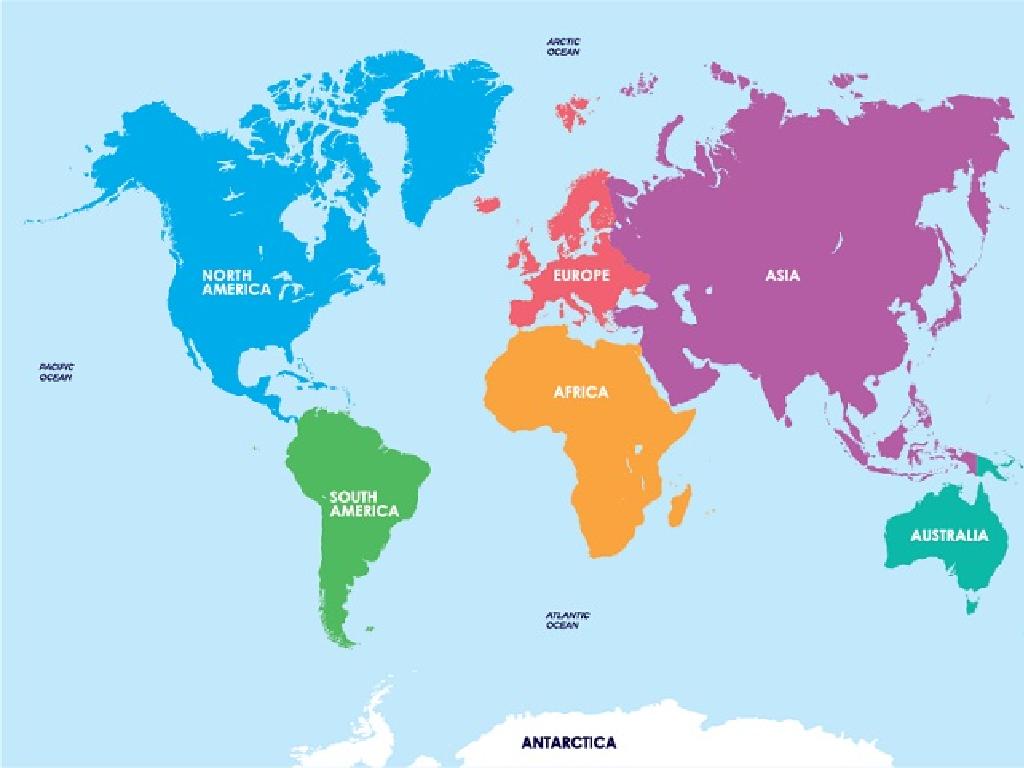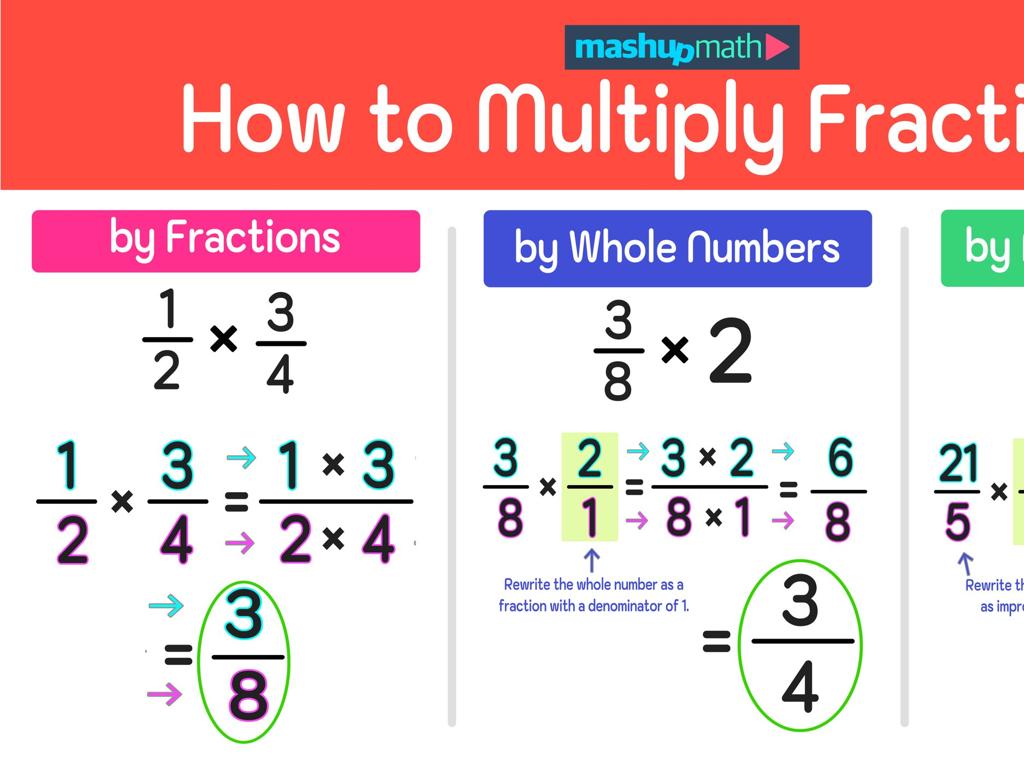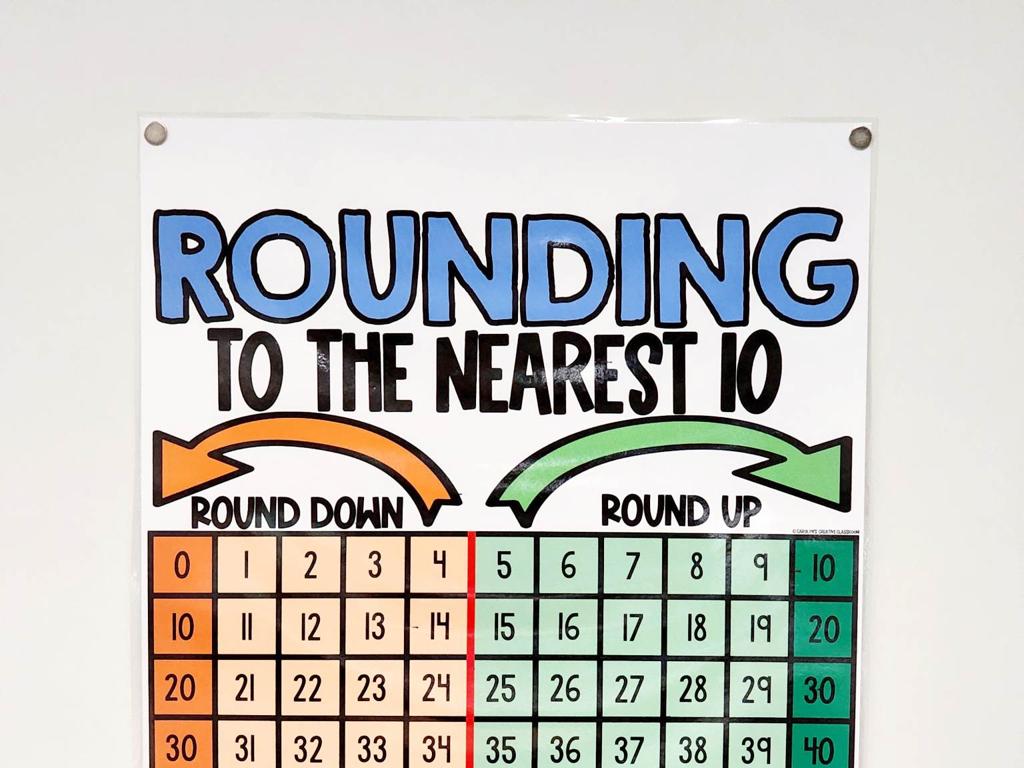Select Parts Of A Topographic Map
Subject: Science
Grade: Fourth grade
Topic: Earth'S Features
Please LOG IN to download the presentation. Access is available to registered users only.
View More Content
Exploring Earth’s Features with Topographic Maps
– What is a topographic map?
– It’s a map that shows the shape of the land using lines and symbols.
– Visualizing land shapes
– These maps help us see hills, valleys, and plains.
– Elevation on topographic maps
– Elevation tells us how high or low the land is.
– Terrain and features
– We can see mountains, rivers, and more on these maps.
|
Begin the lesson by explaining what a topographic map is and how it differs from other types of maps. Emphasize that topographic maps are a tool for understanding the physical features of Earth’s surface. Explain that elevation is shown through contour lines, which connect points of equal elevation. Discuss how these maps can be used to visualize different landforms such as mountains, valleys, and plateaus. Provide examples of how hikers, engineers, and scientists use topographic maps in their work. Encourage students to ask questions about the various symbols and lines they might see on a topographic map.
Exploring Topographic Maps
– Topographic maps show Earth’s shape
– Lines and symbols illustrate the 3D landscape on a flat surface
– They depict mountains, valleys, plains
– See the highs and lows of the land
– Think of them as Earth’s ‘face’
– Each feature like a facial feature
– Useful for hikers and geologists
|
A topographic map is a detailed and accurate graphic representation of cultural and natural features on the ground. The primary purpose of a topographic map is to accurately represent the shape of the Earth’s surface, showing the location and shape of mountains, valleys, and plains. By using contour lines, symbols, and colors, these maps depict the height and slope of the terrain, allowing us to ‘see’ the Earth’s surface in three dimensions on a two-dimensional map. They are particularly useful for outdoor activities such as hiking, as they help to navigate and understand the landscape. In class, we can explore how different lines indicate different elevations and what symbols represent various features like rivers and forests.
Understanding Map Symbols
– Symbols depict terrain features
– Rivers, forests, buildings are shown with symbols
– Colors indicate elevation
– Green to brown shades show low to high elevations
– Recognize common map symbols
– Learn symbols for campsite, mountain peak, and bridge
– Symbols & colors guide us
|
This slide introduces students to the basics of reading topographic maps, focusing on symbols and colors. Symbols are essential for identifying physical features such as rivers, forests, and buildings on a map. Colors help distinguish between different elevations and landscapes, with green typically representing lower elevations and brown indicating higher elevations. Familiarize students with common symbols found on topographic maps, such as a tent for a campsite, a triangle for a mountain peak, and lines for different types of roads. Emphasize the importance of these elements in understanding the geography of an area. Activities can include matching symbols to their meanings, coloring a topographic map, or creating a simple map using learned symbols.
Understanding Contour Lines on Topographic Maps
– Contour lines show elevation
– Lines connect points that are at the same height
– Height representation above sea level
– Elevation is measured relative to sea level
– Close lines indicate steep areas
– Narrow spaces between lines mean a quick change in elevation
– Wide lines suggest flat surfaces
– Broad spaces between lines show gradual or no change in elevation
|
This slide introduces students to the concept of contour lines on topographic maps. Contour lines are essential for understanding the shape of the land, as they connect points that are at the same elevation. By examining these lines, students can determine if the terrain is flat or hilly. Close contour lines indicate steep terrain, suggesting a hill or mountain, while wide contour lines indicate flat or gently sloping terrain. It’s important for students to grasp that the elevation is always measured relative to sea level. During the lesson, use real-life examples like local terrain or familiar landscapes to help students visualize the concepts. Encourage them to draw their own simple topographic maps with different terrains to reinforce the lesson.
Reading Contour Lines on Topographic Maps
– Direction of a slope
– Lines close together show a steep slope; lines far apart show a gentle slope.
– Contour intervals explained
– Contour interval is the elevation difference between lines.
– Spotting hills and valleys
– Hills are shown by concentric circles; valleys are U-shaped lines.
– Practice with real maps
|
This slide introduces students to the basics of reading contour lines on topographic maps, which are essential for understanding Earth’s features. Teach students that the spacing of contour lines indicates the slope’s steepness – closer lines mean a steeper slope. Explain contour intervals as the vertical space between lines, which helps determine the height of hills and depth of valleys. Use real topographic maps to point out hills, marked by closed circles, and valleys, which often appear as U-shaped or V-shaped lines. Encourage students to practice by identifying these features on various maps, reinforcing their understanding of how contour lines depict the shape and elevation of the land.
Understanding Map Scale and Distance
– What is a map scale?
– A map scale shows how map distances compare to real-world distances.
– Importance of map scale
– It helps us understand how far things are in real life.
– Measuring real distances
– Use the scale to measure between places on a map for actual distances.
– Practice with map-to-real conversion
– We’ll convert map distances to real distances as an exercise.
|
This slide introduces students to the concept of scale on a topographic map, which is crucial for understanding the representation of Earth’s features. The scale is a ratio that helps translate distances on the map to actual distances on Earth. Emphasize the importance of scale in navigation and geography. Demonstrate how to use the scale to measure real-world distances by using a ruler on the map and then converting that measurement using the scale. Provide practice examples for students to apply this knowledge, such as measuring the distance between two landmarks on a map and converting it to the actual distance. This practical exercise will help solidify their understanding of scale and its application in real-world scenarios.
Let’s Practice with Topographic Maps!
– Identify map features
– Find hills, valleys, rivers, and more
– Use contour lines for elevation
– Contour lines show how high a hill is
– Measure distance on a map
– Use the map’s scale to find distances
– Pair up for map activities
|
This slide is designed to engage students in hands-on activities with topographic maps. Start by explaining how to identify different features such as hills, valleys, and rivers. Then, demonstrate how contour lines indicate elevation and how to determine the height of a hill. Next, show students how to use the map’s scale to measure the distance between two points. Finally, have students pair up and apply these skills by working on map-related activities. Provide a variety of maps for students to explore and ensure they understand how to use the legend and scale. Encourage collaboration and discussion between partners to facilitate learning.
Class Activity: Crafting Topographic Maps
– Build a 3D landscape model
– Draw contour lines for elevation
– Contour lines are like ‘rings’ that show how high the land is
– Explain your map’s features
– Mention hills, valleys, or any landforms you made
– Share your creation with the class
|
In this hands-on activity, students will create their own 3D landscape using clay or playdough to understand the concept of topographic maps. They will draw contour lines to represent different elevations, just like on real topographic maps. Each student will then present their model to the class, explaining the various features they included such as hills, valleys, and plateaus. This activity will help students visualize how topographic maps represent three-dimensional terrains on a two-dimensional surface. For the teacher: Provide a variety of tools for students to shape their landscapes and assist them in understanding how to draw contour lines at regular intervals to indicate elevation changes. Encourage creativity and ensure that each student can articulate the features of their model and what each contour line represents.
Exploring Earth: Topographic Maps
– Recap of topographic maps
– We learned how to read map symbols and lines.
– Why maps matter for Earth’s features
– They show elevation and landscape shapes.
– Encourage map exploration
– Look at different maps to see various landforms.
– Practice makes perfect
– Try reading maps to get better at identifying features.
|
Today’s lesson provided an overview of topographic maps and their importance in understanding the physical aspects of Earth. These maps are crucial tools for scientists, hikers, city planners, and many others, as they depict the elevation and shape of the land. Encourage students to explore different topographic maps to become familiar with various landforms and to practice reading them to improve their skills. Remind them that practice is key to becoming proficient in interpreting these maps, and this knowledge can be applied in many real-world situations.






